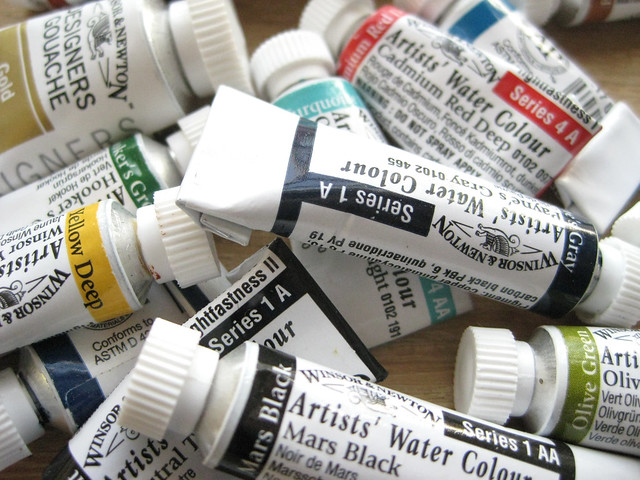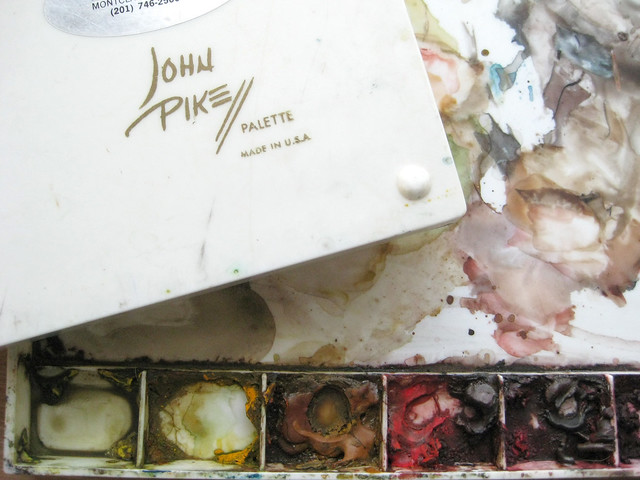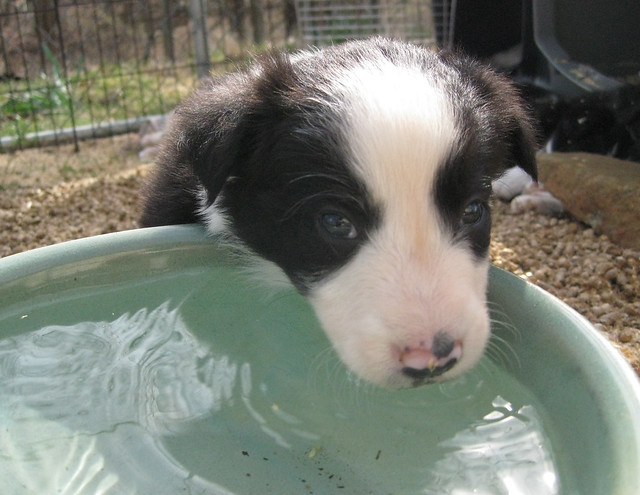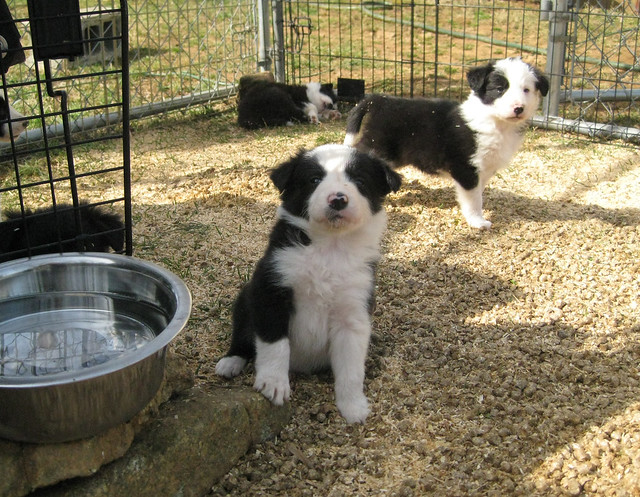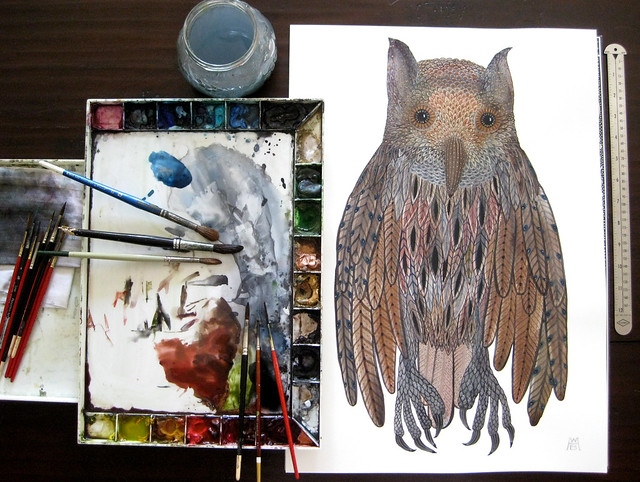Welcome to watercolor 101! Today is all about watercolor paint.
Watercolor is an aqueous medium which means the paint is
water based and activated by water.
water based and activated by water.
Contrary to what you may think,
it is fairly easy to work with and very easy to clean up.
I recommend that you buy the best that you can when
selecting any of your materials. Having great materials
to start with makes all the difference in the world.
it is fairly easy to work with and very easy to clean up.
I recommend that you buy the best that you can when
selecting any of your materials. Having great materials
to start with makes all the difference in the world.
I like to use tube watercolor paint.
I buy the smallest tubes because the binder, gum arabic,
I buy the smallest tubes because the binder, gum arabic,
will separate with age. The paint will cake up
and be impossible to extrude if it's really old,
and be impossible to extrude if it's really old,
so I prefer to squeeze as much as I can into the wells
of my palette where it will be used up.
of my palette where it will be used up.
A bit of rudimentary advice: squeeze and roll the paint
from the bottom of the tube.
from the bottom of the tube.
If you've gone to the trouble of buying really good paint,
you won't want to waste a drop.
you won't want to waste a drop.
There are so many great brands of paint to choose from.
I use good old fashioned Winsor & Newton artist grade
watercolor paint. My metallic colors are Winsor & Newton
artist grade gouache, an opaque watercolor.
watercolor paint. My metallic colors are Winsor & Newton
artist grade gouache, an opaque watercolor.
Artist grade paints contain a full pigment load and
therefore produce a rich, brilliant color.
therefore produce a rich, brilliant color.
There is usually a greater palette of colors
to choose from as well.
to choose from as well.
Which colors to buy?
My palette is an evolution of color and changes all the time.
My palette is an evolution of color and changes all the time.
Choose colors that you like to work with and
remember you can mix and blend many more colors
remember you can mix and blend many more colors
and soften or intensify them with more or less water.
Listed below are some colors I often work with:
Listed below are some colors I often work with:
deep yellow, yellow ochre, brown ochre, burnt sienna,
sepia, burnt umber, cadmium red, alizarin crimson,
neutral tint, payne's gray, mars black, chinese white,
olive green, hooker's green, sap green, cerulean blue,
phthalo turquoise, prussian blue, silver and gold gouache.
sepia, burnt umber, cadmium red, alizarin crimson,
neutral tint, payne's gray, mars black, chinese white,
olive green, hooker's green, sap green, cerulean blue,
phthalo turquoise, prussian blue, silver and gold gouache.
My palette is a John Pike palette.
I've had it for over twenty years and it has served me well.
I've had it for over twenty years and it has served me well.
It has large paint wells with a slightly beveled edge
which helps to keep the paint contained. It also features a large mixing area which is perfect for blending colors and creating washes. It comes with a storage lid that also serves a secondary palette. Every once in a while I soak my palette in water and
which helps to keep the paint contained. It also features a large mixing area which is perfect for blending colors and creating washes. It comes with a storage lid that also serves a secondary palette. Every once in a while I soak my palette in water and
thoroughly clean out the wells of old paint.
For day to day care, I simply wipe the mixing area clean
with a damp rag,add a big drop of water to each paint well
to soften the paint and I'm ready to work.
with a damp rag,add a big drop of water to each paint well
to soften the paint and I'm ready to work.
Here are a few places to shop for watercolor supplies:
Do you have any questions about watercolor paints and palettes?
I really encourage you to experiment and see what works for you!
Next week 101 is all about brushes.

